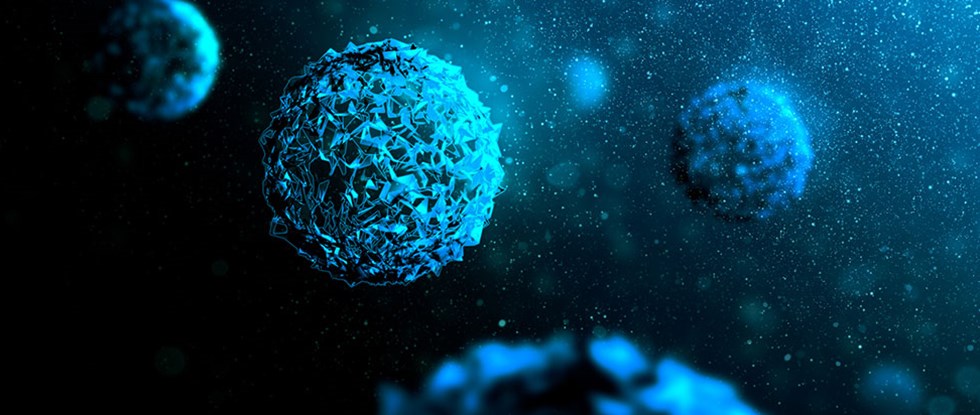FERRING CORPORATE
SELECT COUNTRY


Paving the way for personalised medicine in reproductive health
Collaboration for new approaches to fertility treatment
Ferring Pharmaceuticals and Roche Diagnostics have now been collaborating for over two years. Founded on both companies’ commitment to advancing women’s health, the collaboration is motivated by a shared ambition to pioneer personalised medicine in fertility.
Health organisations across the globe, including the FDA1,2 and NHS England3 already recognise the value of personalised medicine, also known as precision medicine, in delivering the right treatment, for the right patient, at the right time. In oncology, we are already seeing improved patient outcomes thanks to more targeted interventions.4,5
But why focus on personalisation in fertility?
What is a biomarker?
A biomarker, or “biological marker”, is any substance, structure or process that can be objectively measured and evaluated in the body, or from the body’s products, which can influence or predict the incidence of outcome or disease.7
While many women aspire to become mothers, some face more challenges in conceiving children than others. An estimated 9% of women worldwide will experience infertility at some point in their lives.6 While medical approaches continue to advance, Ferring and Roche recognise that there are still many unmet needs when it comes to fertility treatment. These treatment challenges often arise due to individual patient differences; the way one person responds to treatment is rarely the same as another.
Biomarker-based diagnostic technology can help determine these individual patient differences. Fertility specialists already make treatment decisions based on a variety of patient characteristics, including biomarkers. An example of this is anti-Müllerian hormone (AMH) in blood serum,8 which has been recognised for its potential role in predicting ovarian reserve and thus guiding the dosing of fertility drugs.9 Taking a woman’s serum AMH level and other individual characteristics, such as body weight, into account when determining the dose of fertility drugs can help clinicians avoid poor or excessive response to treatment.10
While many women aspire to become mothers, some face more challenges in conceiving children than others. An estimated 9% of women worldwide will experience infertility at some point in their lives.6 While medical approaches continue to advance, Ferring and Roche recognise that there are still many unmet needs when it comes to fertility treatment. These treatment challenges often arise due to individual patient differences; the way one person responds to treatment is rarely the same as another.
Biomarker-based diagnostic technology can help determine these individual patient differences. Fertility specialists already make treatment decisions based on a variety of patient characteristics, including biomarkers. An example of this is anti-Müllerian hormone (AMH) in blood serum,8 which has been recognised for its potential role in predicting ovarian reserve and thus guiding the dosing of fertility drugs.9 Taking a woman’s serum AMH level and other individual characteristics, such as body weight, into account when determining the dose of fertility drugs can help clinicians avoid poor or excessive response to treatment.10
What is anti-Müllerian hormone?
Anti-Müllerian hormone (AMH) is a hormone produced by granulosa cells of small growing follicles within the ovary. Circulating levels of AMH in women increase throughout childhood and puberty, peaking in the mid-20s, and thereafter gradually decline as the woman progresses into menopause.11
Research suggests women’s individual serum AMH levels accurately reflects the quantity of the remaining follicles capable of fertilization,8thus giving indication of potential ovarian responsiveness to treatment.8
AMH has characteristically low variability during and between a woman’s menstrual cycles9 making it a reliable biomarker of ovarian reserve for women undergoing assisted reproductive technologies.
What is a companion diagnostic?
A companion diagnostic is a medical device, often an in vitro device, which provides information necessary for the safe and effective use of a corresponding drug or biological product.
Despite recognition of the benefits that biomarkers can bring to help make informed treatment decisions, companion diagnostic technology has never before been used alongside a fertility treatment. Ferring and Roche have therefore come together to find a solution that combines biomarker-based companion diagnostics with product innovation to more effectively tailor a patient’s treatment strategy based on her individual characteristics and predicted ovarian response. What this means for physicians is a more consistent and more precise evidence-based approach to personalisation.
We believe that by working together to deliver innovative treatments paired with companion diagnostics, we can advance the role of personalised medicine in fertility and ultimately help more people achieve their dream of becoming parents.
References:
- U.S. Food & Drug Administration. Precision Medicine. Available from: http://www.fda.gov/scienceresearch/specialtopics/personalizedmedicine/default.htm. Last accessed: September 2016.
- US Department of Health and Human Services, US Food and Drug Administration. Paving the Way for Personalized Medicine: FDA’s Role in a New Era of Medical Product Development. Silver Spring, MD: US Food and Drug Administration. 2013.
- NHS England. Improving Outcomes through Personalised Medicine. 2016.
- Jackson SE, & Chester JD. Personalised cancer medicine. International Journal of Cancer. 2015. 137(2), 262–266.
- Kalia M. Biomarkers for personalized oncology: recent advances and future challenges. Metabolism. 2015. 64(3):S16–21.
- Boivin J, et al. International estimates of infertility prevalence and treatment-seeking: potential need and demand for infertility medical care. Hum Reprod. 2007; 22(6):1506-1512.
- Strimbu K, Tavel JA. What are biomarkers? Current Opinion in HIV and AIDS. 2010; (6):463.
- La Marca A, et al. Anti-Mullerian hormone (AMH) as a predictive marker in assisted reproductive technology (ART). Hum Reprod Update. 2010; 16:113–130.
- Fleming R, et al. Can anti-Mullerian hormone concentrations be used to determine gonadotropin dose and treatment protocol for ovarian stimulation? Reprod BioMed Online. 2013; 26:431–439.
- La Marca A, Sunkara SK. Individualization of controlled ovarian stimulation in IVF using ovarian reserve markers: from theory to practice. Hum Reprod Update. 2014; 20:124–140.
- Kelsey TW, et al. A validated model of serum anti-mullerian hormone from conception to menopause. PLoS One. 2011; 6:e22024.